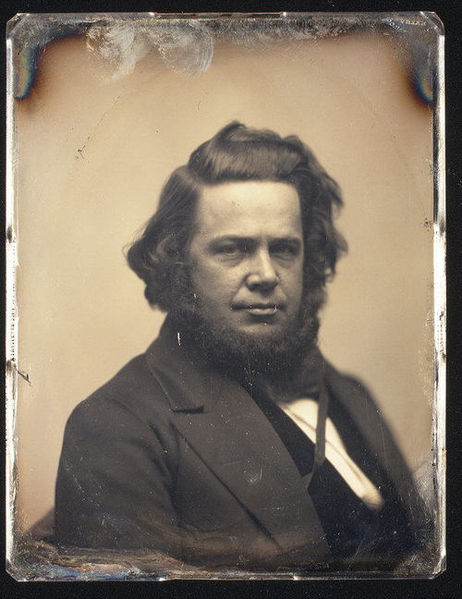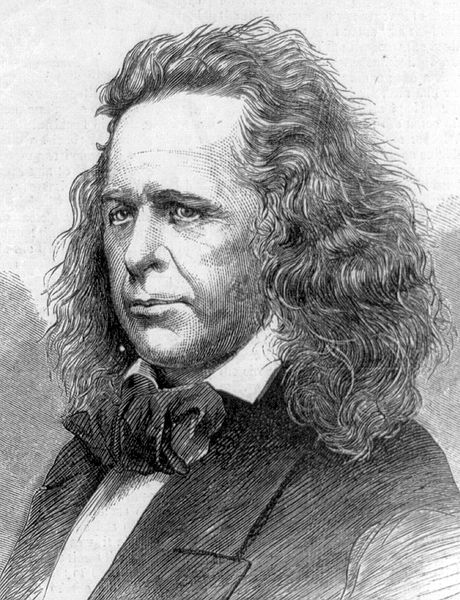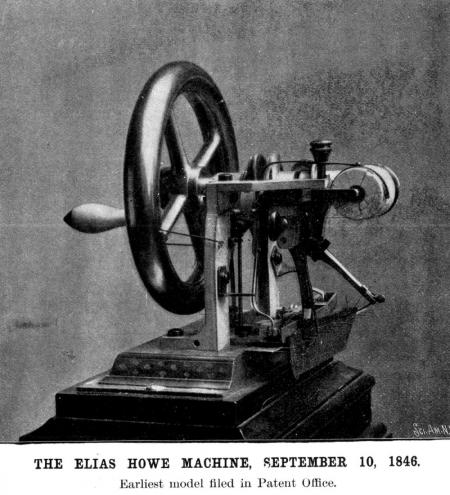<Back to Index>
- Inventor Elias Howe, Jr., 1819
- Composer Ottorino Respighi, 1879
- Holy Roman Emperor Ferdinand II, 1578
PAGE SPONSOR



Elias Howe, Jr. (July 9, 1819 – October 3, 1867) was an American inventor and sewing machine pioneer.
Howe was born on 9 July 1819 to Dr. Elias Howe, Sr. and Polly (Bemis) Howe in Spencer, Massachusetts. Howe spent his childhood and early adult years in Massachusetts where he apprenticed in a textile factory in Lowell beginning in 1835. After mill closings due to the Panic of 1837, he moved to Cambridge, Massachusetts, to work as a mechanic with carding machinery, apprenticing along with his cousin Nathaniel P. Banks. Beginning in 1838, he apprenticed in the shop of Ari Davis, a master mechanic in Cambridge who specialized in the manufacture and repair of chronometers and other precision instruments. It was in the employ of Davis that Howe seized upon the idea of the sewing machine.
He married Elizabeth Jennings Ames, daughter of Simon Ames and Jane B. Ames on 3 Mar 1841 in Cambridge. They had three children: Jane Robinson Howe, Simon Ames Howe, and Julia Maria Howe. Contrary
to popular belief, Howe was not the first to conceive of the idea of a
sewing machine. Many other people had formulated the idea of such a
machine before him, one as early as 1790, and some had even patented
their designs and produced working machines, in one case at least 80 of
them. However,
Howe originated significant refinements to the design concepts of his
predecessors, and on September 10, 1846, he was awarded the first
United States patent (U.S. Patent 4,750) for a sewing machine using a lockstitch design. His machine contained the three essential features common to most modern machines: Despite
securing his patent, Howe had considerable difficulty finding investors
in the United States to finance production of his invention, so his
elder brother Amasa Bemis Howe traveled to England in October 1846 to
seek financing. Amasa was able to sell his first machine for £250
to William Thomas of Cheapside, London,
who owned a factory for the manufacture of corsets, umbrellas and
valises. Elias and his family joined Amasa in London in 1848, but after
business disputes with Thomas and failing health of his wife, Howe
returned nearly penniless to the United States. His wife Elizabeth, who
preceded Elias back to the United States, died in Cambridge,
Massachusetts, shortly after his return in 1849. Despite
his efforts to sell his machine, other entrepreneurs began
manufacturing sewing machines. Howe was forced to defend his patent in
a court case that lasted from 1849 to 1854 because he found that Isaac Singer with cooperation from Walter Hunt had
perfected a facsimile of his machine and was selling it with the same
lockstitch that Howe had invented and patented. He won the dispute and
earned considerable royalties from
Singer and others for sales of his invention. Howe contributed much of
the money he earned to equip the 17th Connecticut Volunteer
Infantry Regiment of the Union Army during the Civil War,
in which Howe served during the Civil War as a private in Company D and
regimental postmaster from August 14, 1862, to July 19, 1865. In 1865, Elias established the Howe Machine Company of Bridgeport, Connecticut, that
was operated by the Stockwell brothers, his brothers-in-law, from 1867
until about 1885. Between 1867 and 1870, Elias's brother Amasa operated
a factory in New York City manufacturing sewing machines under the
brand name of A.B. Howe. Elias's sewing machine won the gold medal at
the Paris Exhibition of 1867, and that same year he was awarded the Légion d'honneur by Napoleon III for his invention. Howe died at age 48, on 3 October 1867. He was buried in Green-Wood Cemetery in Brooklyn, New York, with his second wife Rose Halladay who died on 10 Oct 1890. Both Singer and Howe ended their days as multi-millionaires. The Beatles' 1965 movie Help! is
dedicated to Howe as part of its closing credits, and in 2004 he was
inducted into the United States National Inventors Hall of Fame.